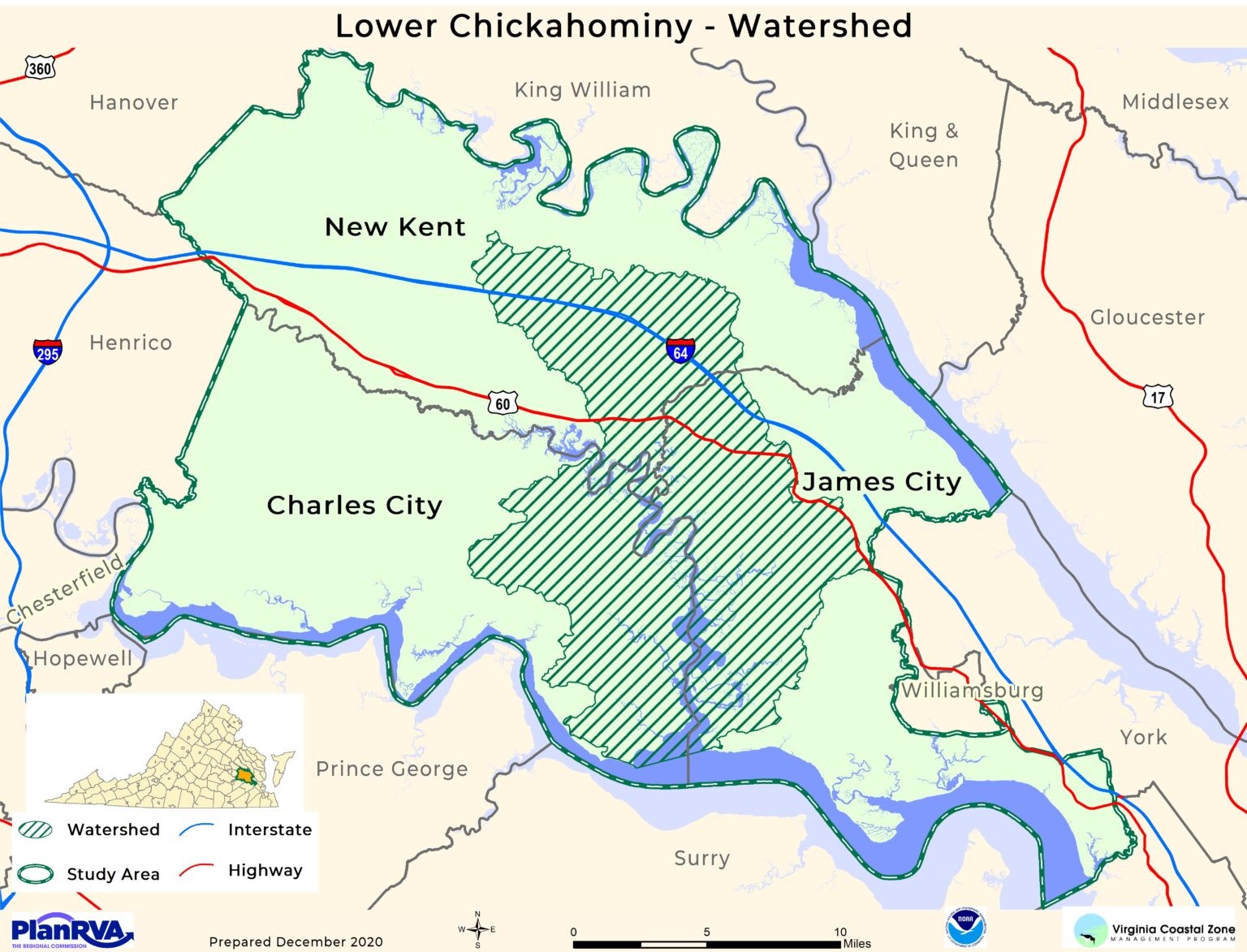Virginia Collaborative Promotes Economic Perks of Lower Chickahominy Conservation
The Takeaway: The Virginia Coastal Zone Management Program and partners—buoyed by evidence that conservation funnels millions of extra dollars into the local economy—have signed a memorandum of understanding that promotes ecotourism’s economic benefits and helps preserve Indigenous and ecological assets.

Virginia’s Lower Chickahominy River watershed is a region in transition. Its near-pristine marshes are located not far from rapidly developing areas in James City and New Kent Counties. A memorandum of understanding to establish the Lower Chickahominy Watershed Collaborative—believed to be the first of its kind in the Mid-Atlantic region—provides the local government and tribal coordination needed to promote ecotourism and safeguard natural resources and Indigenous cultural assets.
The Virginia Coastal Zone Management Program led a five-year effort to bring together this group of partners, which includes three tribes, three localities, two regional planning district commissions, and state agencies, businesses, and environmental nongovernmental organizations. A NOAA grant and training provided by NOAA’s Digital Coast (Social Science Basics for Coastal Managers) were important components of this effort.
Economic findings, training inspire initiative
Several years ago, a coastal planner with the state’s coastal zone management agency used skills learned in the Social Science Basics for Coastal Managers training—such as conducting effective interviews, leading focus groups, and identifying potential sources of conflict—to start bringing together partners with a big stake in local area conservation. (The training was hosted by the Chesapeake Bay-Virginia National Estuarine Research Reserve.) Efforts to make the Lower Chickahominy Watershed Collaborative a reality were aided by the University of Virginia’s Institute for Engagement and Negotiation.
The coastal planner knew that a 2018-2019 regional study by George Mason University’s Center for Regional Analysis had revealed big economic benefits from conservation actions in the Lower Chickahominy River watershed region:
- In 2018, businesses that benefited directly from the region’s land conservation efforts totaled more than $8 million, bolstering gross regional product by about $4.4 million and supporting over 100 jobs.
- Every $1.00 spent annually in Charles City County to provide public services supporting conservation easements yields extra county revenue estimated at $1.28. Similarly, in James City County every $1.00 spent annually yields county revenue estimated at $1.53, and in New Kent County every $1.00 spent annually yields county revenue estimated at $1.21.
- A limited review of one riverside property development suggests that regional water quality improvements linked to conservation practices could potentially benefit landowners by millions of dollars in property values.
A similar study of Virginia’s Eastern Shore conducted between 2016 and 2017 by the same George Mason University team also found that millions of extra dollars flowed into the local economy because of conservation. (Grants from Virginia Coastal Zone Management made the two studies possible.)
Most recently, the Capital Region Land Conservancy and Chesapeake Bay-Virginia Research Reserve have also joined the collaborative. In addition, the collaborative’s three working groups continue to address watershed priorities with assistance from the Virginia Coastal Zone Management coastal planner and funding to the Richmond Regional Planning District Commission. (2020/Updated 2021 and 2022)
Partners: Capital Region Land Conservancy, Charles City County, Chesapeake Bay-Virginia Research Reserve, Chickahominy Indian Tribe-Eastern Division, George Mason University, Hampton Roads Planning District Commission, James City County, New Kent County, Pamunkey Indian Tribe, Richmond Regional Planning District Commission, PlanRVA, The Nature Conservancy, U.S. Fish and Wildlife Service, University of Virginia, Urban Analytics, Virginia Coastal Zone Management Program, Virginia Department of Wildlife Resources, Virginia Eastern Shore Conservation Alliance, Virginia Eastern Shore Land Trust
PRINT